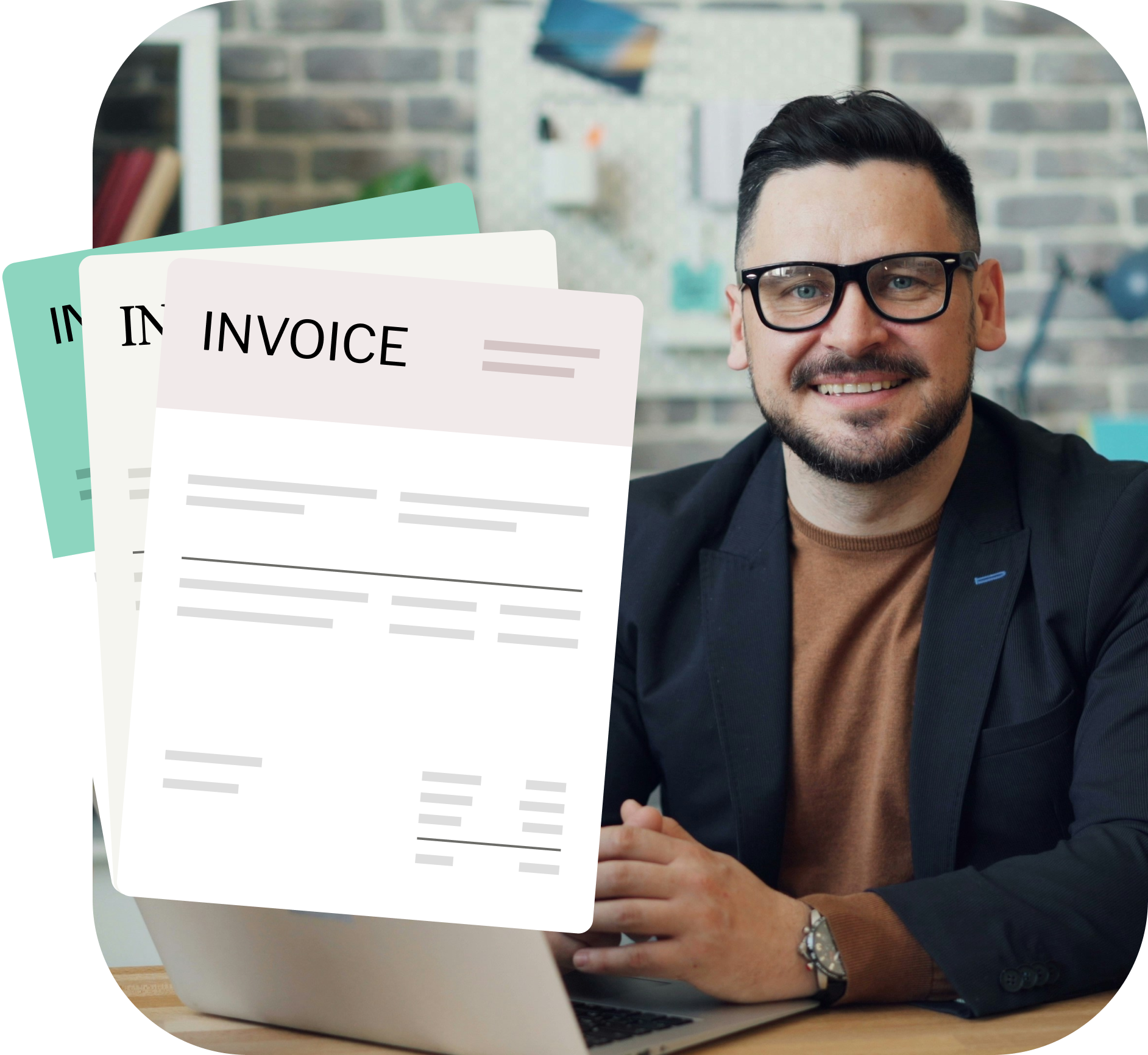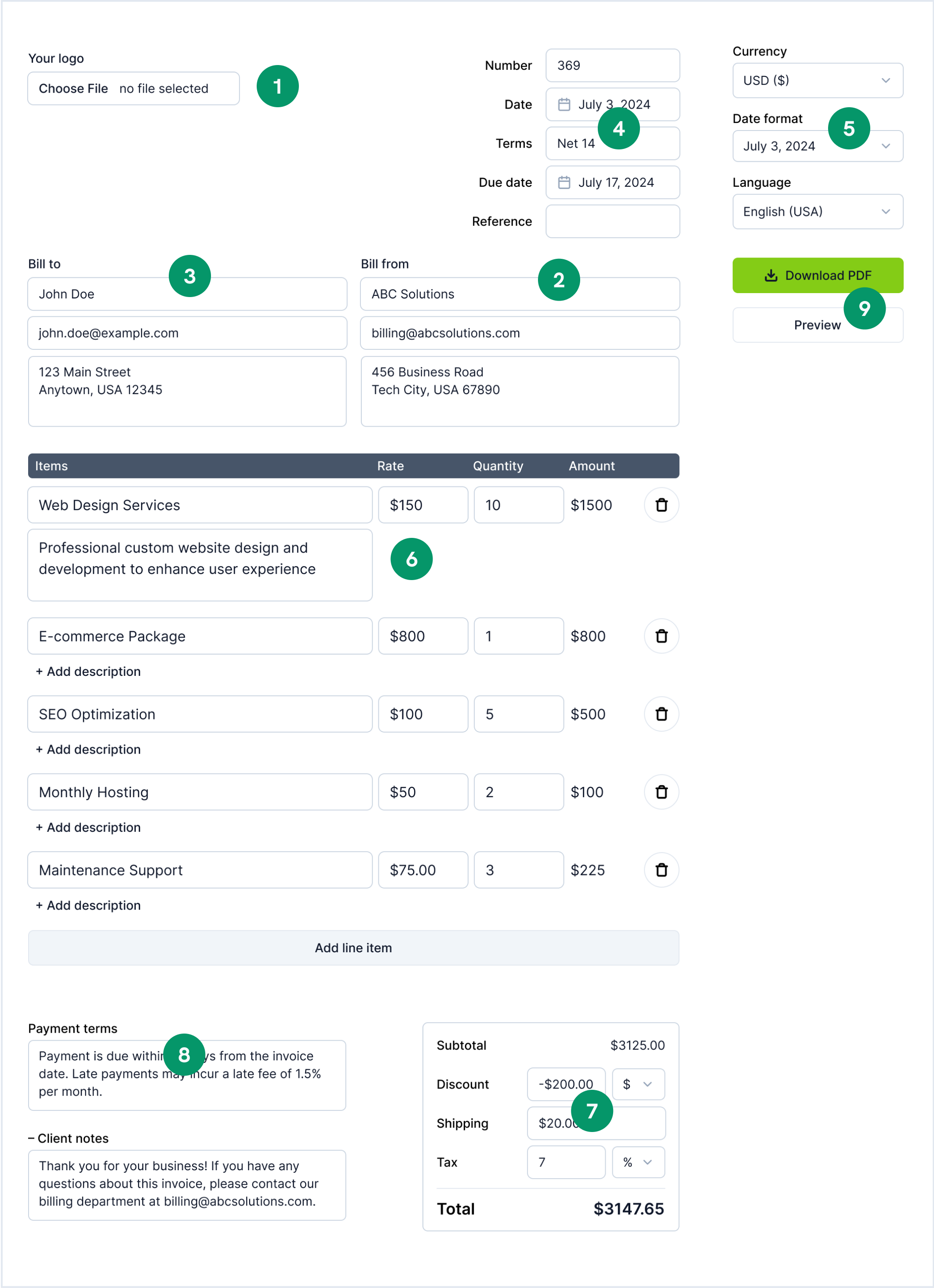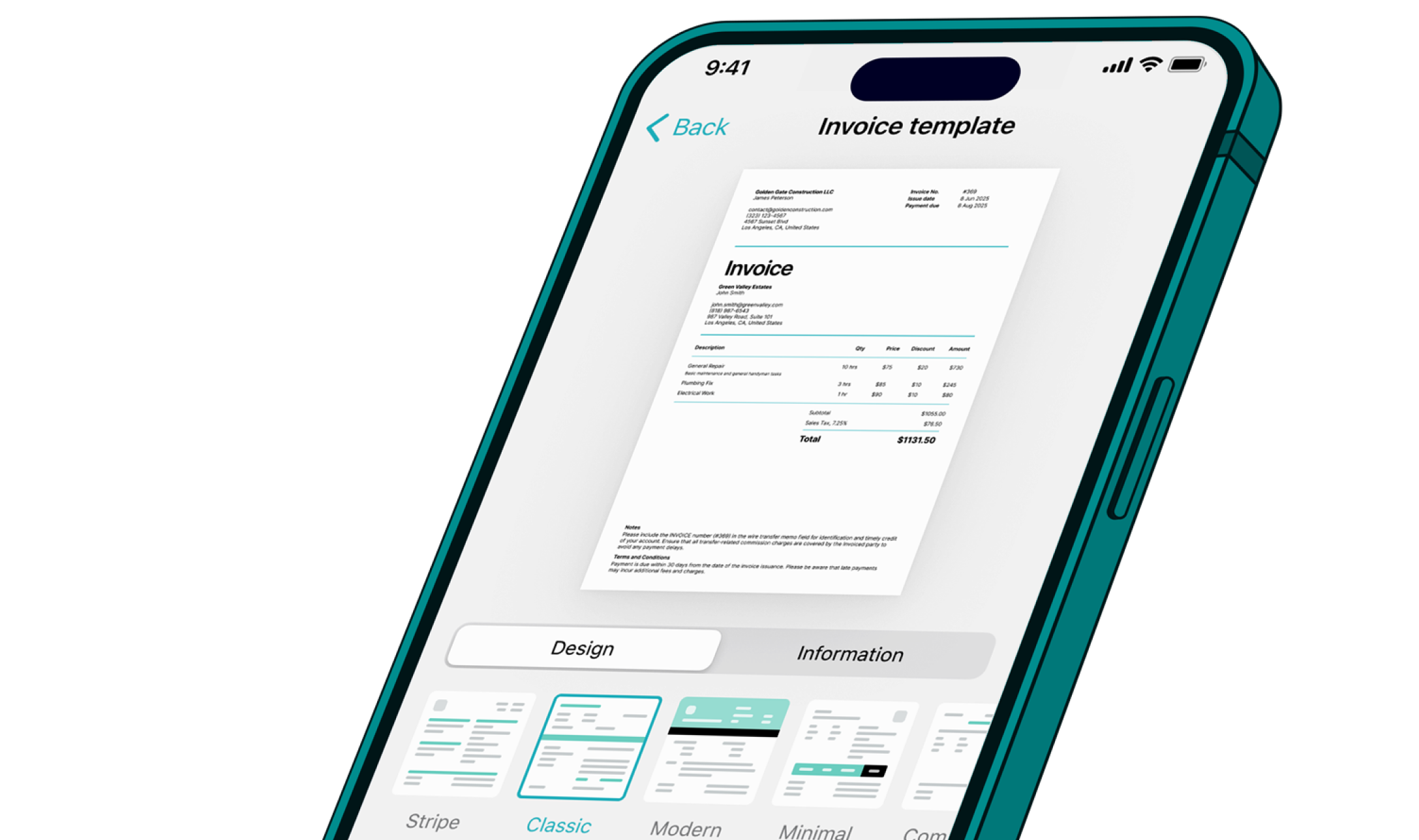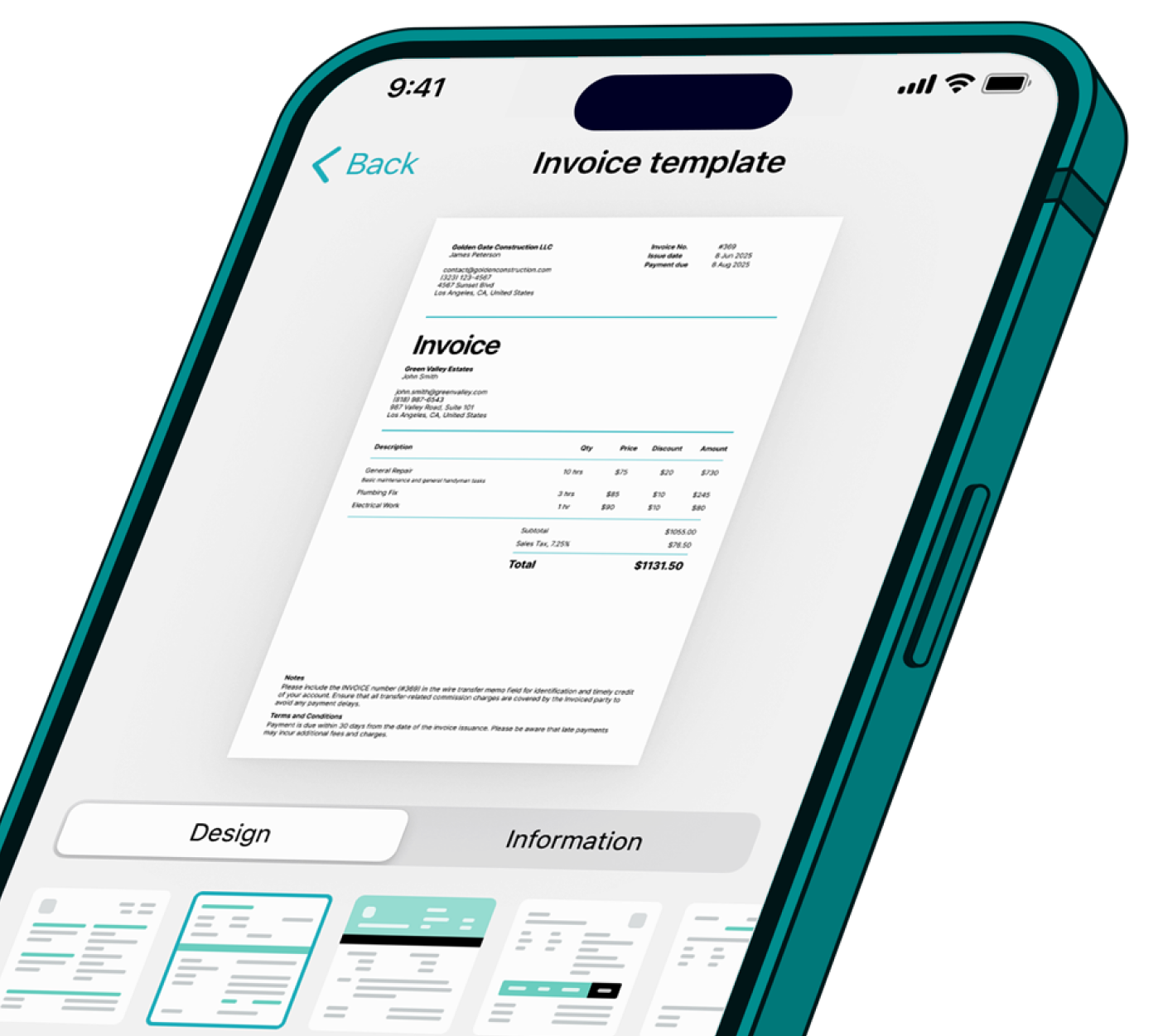



An invoice is a formal document issued by a seller to a buyer, detailing the products or services provided and the amount owed. It typically includes important information such as the seller’s and buyer’s contact details, a unique invoice number, the date of issue, a description of the goods or services, quantities, unit prices, total amount due, and payment terms. Invoices are essential for maintaining accurate financial records and ensuring smooth business transactions. They serve as a request for payment and a record of the sale, helping both parties keep track of their finances and obligations.
The primary purpose of an invoice is to request payment from a buyer for goods or services provided by the seller. It also serves several other important functions:
- Documentation: Provides a detailed record of the transaction.
- Payment Terms: Specifies payment terms, including due dates and accepted payment methods.
- Taxation: Helps in calculating and documenting taxes owed.
- Legal Proof: Acts as a legal document that can be used in disputes or audits.
- Accounting: Assists both parties in maintaining accurate financial records.
Yes, there are various types of invoices designed to suit different business needs:
- Standard Invoice: Used for typical sales transactions.
- Pro Forma Invoice: A preliminary bill of sale sent to buyers before the goods are delivered or services are provided.
- Recurring Invoice: Used for ongoing services or subscriptions.
- Credit Invoice: Issued when a refund is given or an overcharge is corrected.
- Debit Invoice: Issued when undercharges need to be corrected.
- Timesheet Invoice: Used for billing clients based on hours worked.
An effective invoice should include the following details:
- Contact Information: Details of the seller and buyer.
- Invoice Number: A unique identifier for tracking.
- Date of Issue: When the invoice was created.
- Description of Goods/Services: Detailed information about what was provided.
- Quantities and Unit Prices: How much and at what cost.
- Total Amount Due: The sum payable, including any taxes or discounts.
- Payment Terms: Due date and accepted payment methods.
- Additional Notes: Any other relevant information, such as terms of service or warranty details.
An invoice is issued before payment and serves as a request for payment, detailing the products or services provided and the amount owed. A receipt, on the other hand, is issued after payment has been received. It confirms that the buyer has paid for the goods or services, providing proof of the transaction. Invoices are used for requesting payment, while receipts are used for acknowledging payment.
Sending an invoice to a client can be done in several ways:
- Email: Attach the invoice as a PDF and send it directly to the client’s email.
- Mail: Print the invoice and send it via postal service.
- Invoice Generator: Use an online tool to generate and send invoices directly to clients.
- In-Person: Hand the invoice to the client during a meeting or delivery.
Ensure the invoice is clear, accurate, and includes all necessary details for prompt payment.
The timing of sending an invoice depends on the nature of your business and agreement with the client. Here are some general guidelines:
- Immediately After Service/Product Delivery: Ensures prompt payment and fresh transaction details.
- End of the Billing Cycle: For ongoing services, send invoices at the end of the agreed billing period.
- Upon Contract Agreement: For project-based work, invoices can be sent based on milestones or phases.
Clear communication with the client about when to expect invoices can help in maintaining a smooth cash flow.
If a client doesn’t pay an invoice on time, it can lead to several actions:
- Follow-Up: Send reminder emails or calls to prompt payment.
- Late Fees: Apply any agreed-upon late fees to the outstanding amount.
- Payment Plans: Offer installment options if the client is facing financial difficulties.
- Legal Action: As a last resort, consider legal action or debt collection services.
Consistent follow-up and clear communication are key to resolving overdue payments.
Yes, you can and should add taxes and discounts to an invoice if applicable. Here’s how:
- Taxes: Clearly state the tax rate and amount, ensuring compliance with local regulations.
- Discounts: Specify any discounts offered, either as a percentage or a fixed amount.
Ensure these details are included in the total amount due, providing transparency to the client.
An invoice itself is not a legally binding contract, but it can serve as evidence of an agreement between the buyer and seller. It documents the terms of the transaction and can be used in legal disputes to prove what was agreed upon. For an invoice to be enforceable, it should clearly outline the payment terms and be agreed upon by both parties.
Adding a due date on an invoice is crucial for several reasons:
- Clear Expectations: Sets clear payment expectations for the client.
- Cash Flow Management: Helps businesses manage their cash flow effectively.
- Encourages Prompt Payment: Clients are more likely to pay on time if a due date is specified.
- Legal Compliance: Ensures compliance with any legal requirements for payment terms.
Clients can pay invoices using various methods:
- Credit/Debit Cards: Accept payments through secure online gateways.
- Bank Transfers: Provide bank details for direct transfers.
- Checks: Accept physical or electronic checks.
- Payment Services: Use services like PayPal, Stripe, or other digital payment options.
Clearly state the accepted payment methods on your invoice to ensure smooth transactions.
No, an invoice does not necessarily need a logo, but adding one can enhance its professional appearance and reinforce your brand identity. A logo makes your invoice easily recognizable and adds a touch of professionalism, which can positively impact your business’s image.
Our Free Invoice Generator allows you to create professional invoices quickly and accurately. With intuitive features and a user-friendly interface, generating invoices is a seamless process, ensuring that your billing is done efficiently and without errors.
Save valuable time with our Free Invoice Generator. Automated features and easy-to-use templates mean you spend less time on administrative tasks and more time focusing on your business. Streamlined processes help you manage your invoices effortlessly.
Create polished and professional-looking invoices that reflect your brand. Our customizable templates ensure that your invoices look consistent and professional, helping to build trust and credibility with your clients.
With our Free Invoice Generator, you can preview your invoices before sending them, ensuring all details are correct. Once finalized, download your invoices as PDFs for easy sharing and record-keeping. This feature ensures your invoices are always ready for distribution.












